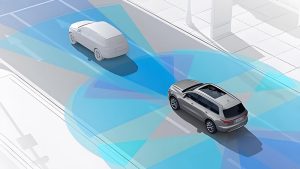As the demand for faster and more efficient logistics continues to grow, the integration of advanced technologies such as drones has become a focal point for innovation in the delivery sector. Among the most crucial technologies enabling the safe and effective operation of drones is LiDAR (Light Detection and Ranging). This technology plays a pivotal role in enhancing navigation, obstacle avoidance, and precision landing for delivery drones, making it an essential tool for the future of logistics. In this article, we will explore how LiDAR is transforming drone delivery by improving efficiency and safety.
Understanding LiDAR Technology in Drone Delivery
LiDAR works by emitting laser pulses and measuring the time it takes for the light to bounce back after hitting an object. The data collected is then used to create a detailed, three-dimensional map of the drone’s surroundings. This allows the drone to “see” and navigate its environment with remarkable accuracy, even in challenging conditions such as poor visibility, changing weather, or complex urban landscapes.
In the context of drone delivery, LiDAR provides essential real-time data that enables drones to:
- Avoid Obstacles: One of the key challenges in drone delivery is safely navigating through densely populated areas or regions with many obstacles such as buildings, trees, and power lines. LiDAR offers real-time, high-precision mapping that allows drones to detect and avoid these obstacles, reducing the risk of accidents.
- Enable Precision Landing: LiDAR ensures that drones can land with extreme accuracy, even on small or moving platforms. This is crucial in situations where deliveries are made to specific spots, such as the roof of a building or a designated landing zone in a busy city.
- Enhance Flight Stability: By constantly analyzing the environment, LiDAR helps the drone adjust its flight path dynamically, ensuring smooth operation in varying wind conditions or other external disturbances.
Efficiency Boost Through Autonomous Navigation
LiDAR’s ability to provide precise and detailed 3D mapping significantly enhances the autonomous capabilities of delivery drones. Traditional GPS navigation, while useful, often lacks the precision needed for close-range obstacle detection and avoidance. LiDAR fills this gap by offering centimeter-level accuracy, making fully autonomous drone delivery systems more viable.
With LiDAR, drones can autonomously plan and adjust their routes, optimizing their path to the delivery point. This reduces delays caused by manual intervention, enhances route efficiency, and minimizes energy consumption, making drone delivery faster and more sustainable.
Improving Safety in Urban Environments
Urban environments present unique challenges for drone delivery systems. Tight spaces, unexpected obstacles, and constantly changing conditions make it difficult for drones to operate safely. LiDAR enhances the safety of urban drone deliveries by providing real-time situational awareness. Drones equipped with LiDAR can:
- Detect and Avoid Pedestrians: Drones flying in urban areas need to avoid not just buildings but also pedestrians and moving vehicles. LiDAR’s ability to create real-time 3D maps allows drones to detect and navigate around moving objects, reducing the likelihood of collisions.
- Manage Traffic in the Sky: As drone delivery becomes more prevalent, air traffic management will become a major concern. LiDAR technology can help drones maintain safe distances from each other, ensuring a controlled and organized airspace, particularly in congested areas.
Enhancing Scalability for Large-Scale Operations
As companies look to scale their drone delivery operations, LiDAR’s precision and reliability become even more important. Large fleets of drones operating simultaneously need a robust system to ensure they don’t interfere with each other or with existing infrastructure. LiDAR allows for better coordination and fleet management by enabling drones to communicate and share real-time spatial data.
Moreover, LiDAR helps with logistics planning by mapping delivery zones in advance, identifying potential obstacles, and ensuring that delivery routes are optimized for both time and safety. This scalability makes it easier for companies to expand their drone delivery networks without compromising on performance.
Future Prospects of LiDAR in Drone Delivery
The future of drone delivery is undoubtedly tied to advancements in technologies like LiDAR. As LiDAR becomes more compact and affordable, its adoption will increase, leading to even more efficient and safe drone operations. Furthermore, the integration of LiDAR with artificial intelligence and machine learning algorithms will enable drones to make smarter decisions autonomously, further reducing the need for human intervention.
In addition, the combination of LiDAR with other sensors, such as cameras and radar, will create multi-modal systems that provide drones with a comprehensive understanding of their environment. This will enable drones to operate in even more complex scenarios, such as night-time deliveries or flights through adverse weather conditions.
Conclusion
LiDAR technology is a game-changer in the field of drone delivery. By providing precise, real-time data for navigation, obstacle avoidance, and landing, LiDAR enhances the efficiency and safety of logistics operations. As drone delivery becomes more widespread, LiDAR’s role will only grow, making it a cornerstone of future delivery systems. The integration of LiDAR with other emerging technologies promises to unlock new possibilities, paving the way for a safer, faster, and more efficient future in logistics.


